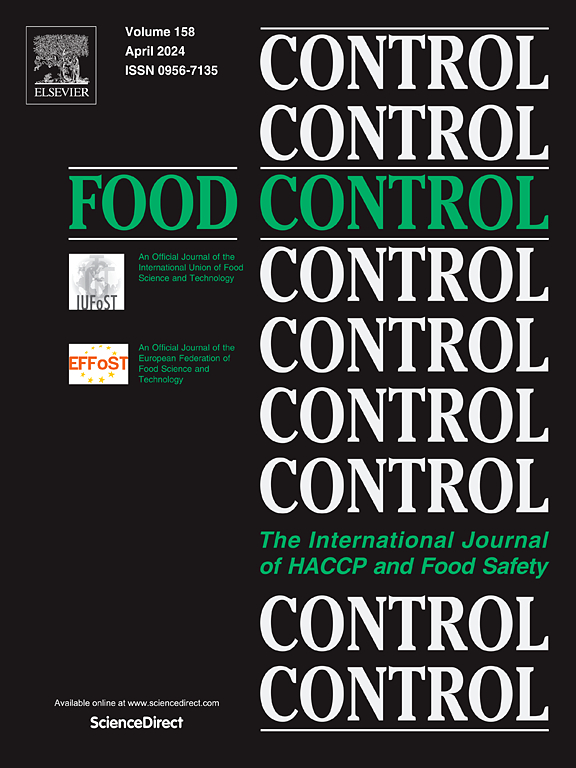Establishment and verification of GC-MS/MS method for four fluoroquinolones residues determination based on precolumn derivatization: Application to poultry eggs
IF 5.6
1区 农林科学
Q1 FOOD SCIENCE & TECHNOLOGY
引用次数: 0
Abstract
In this study, liquid‒liquid extraction and solid‒phase extraction were coupled with derivatization to detect 4 types of fluoroquinolones residues in poultry eggs (chicken, duck, goose, and quail eggs) via GC-MS/MS. A 10% trichloroacetic acid‒acetonitrile solution and trimethylsilyl diazomethane (TMSD) were chosen as the extraction and derivatization reagents, respectively. The results revealed that the detection and quantitative limits (LODs, LOQs) were 1.0, 0.2, 0.5, and 1.0 μg/kg and 2.0, 0.4, 1.0, and 2.0 μg/kg, respectively. The peak areas of all the target compounds had a good linear relationship with the corresponding concentrations of the matrix matched standard working solution, with R2 values higher than 0.9991. The recoveries of the target compounds were all higher than 78.0%. The RSDs ranged from 2.1% to 8.0%. All the matrices had weak matrix effect. This established method satisfied the requirements of the NY/T 1896–2010 industry standard for veterinary drug residue detection in China, providing a scientific basis for fluoroquinolone residue detection. Furthermore, this method expands the monitoring range, improves the detection efficiency, reduces the cost, and meets the detection needs of different laboratories.

求助全文
约1分钟内获得全文
求助全文
来源期刊

Food Control
工程技术-食品科技
CiteScore
12.20
自引率
6.70%
发文量
758
审稿时长
33 days
期刊介绍:
Food Control is an international journal that provides essential information for those involved in food safety and process control.
Food Control covers the below areas that relate to food process control or to food safety of human foods:
• Microbial food safety and antimicrobial systems
• Mycotoxins
• Hazard analysis, HACCP and food safety objectives
• Risk assessment, including microbial and chemical hazards
• Quality assurance
• Good manufacturing practices
• Food process systems design and control
• Food Packaging technology and materials in contact with foods
• Rapid methods of analysis and detection, including sensor technology
• Codes of practice, legislation and international harmonization
• Consumer issues
• Education, training and research needs.
The scope of Food Control is comprehensive and includes original research papers, authoritative reviews, short communications, comment articles that report on new developments in food control, and position papers.
 求助内容:
求助内容: 应助结果提醒方式:
应助结果提醒方式:


